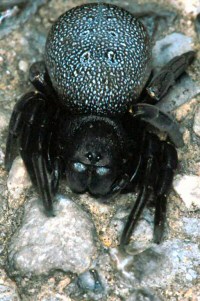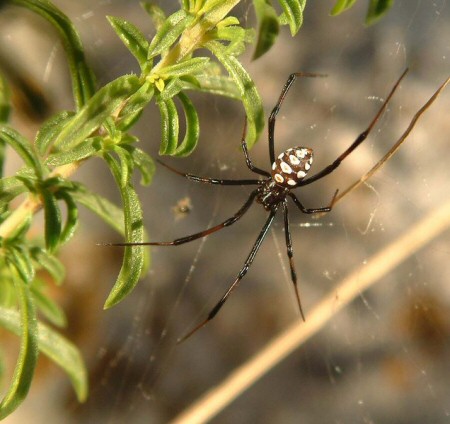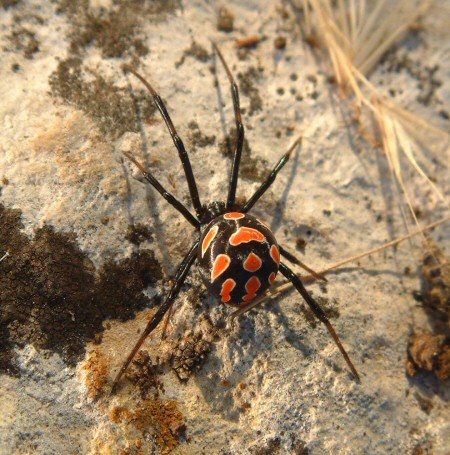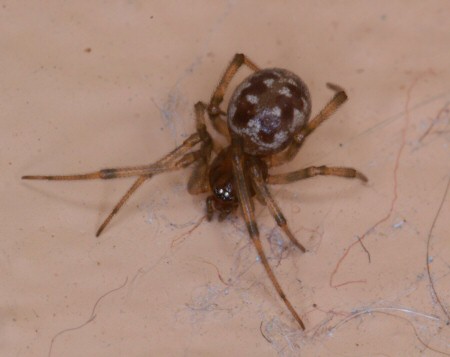
Theridiidae
Steatoda grossa
Size : 10 mm
Habitat: In in outside houses and buildings on all canary islands except La Palma and Fuerteventura.
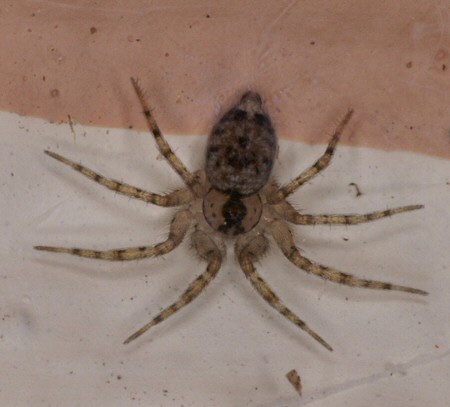
Oecobiidae
Oecobius species female
Size : 2.5 mm
Habitat: In and around houses. Spider sits on the wall sometimes under cover of a small circular web.
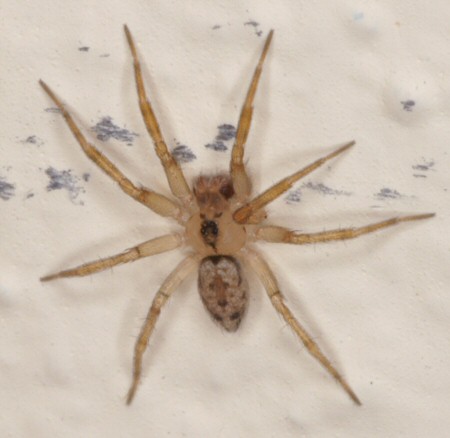
Oecobiidae
Oecobius species male
Size : 2.5 mm
Habitat: In and around houses. Spider sits on the wall sometimes under cover of a small circular web.
Seven different Oecobius species are identified on this island.
| Oecobius caesaris Wunderlich, 1987 |
| Oecobius dolosus Wunderlich, 1987 |
| Oecobius gomerensis Wunderlich, 1979 |
| Oecobius hayensis Wunderlich, 1992 |
| Oecobius persimilis Wunderlich, 1987 |
| Oecobius rugosus Wunderlich, 1987 |
| Oecobius similis Kulczynski, 1909 |

Araneidae
Orb weaver
Aculepeira annulipes ( by GPT)
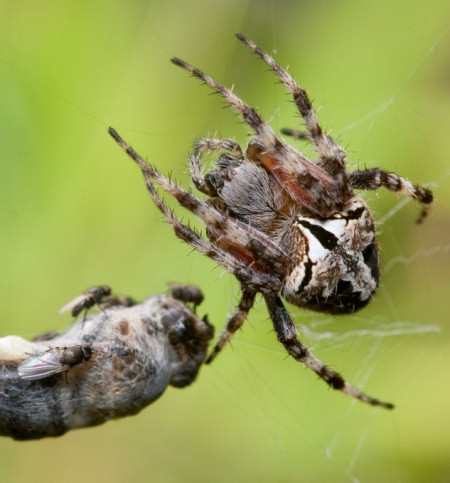
Araneidae
Orb weaver
Araneus bufo ( by GPT)
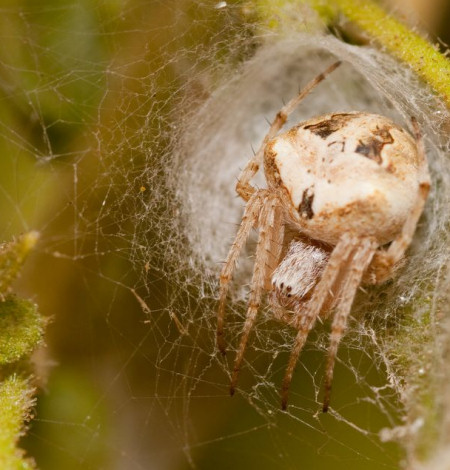
Araneidae
Orb weaver
Neoscona species ZZ436 ( by GPT)

Araneidae
Argiope lobata

Araneidae
Argiope trifasciata
Size : female 15 mm, male 5 mm
Habitat: Between grass and heather all over the island. Large web ofter with a white banded zig zag.

Araneidae
Araniella maderiana ( by GPT)
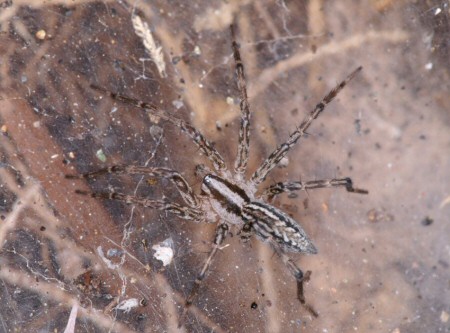
Agelenidae
Agelena canariensis or Agelena gomerensis
Builds a sheet web with a tubular retreat.
Size : 9 mm
Habitat: Dry areas amongst vegetation.
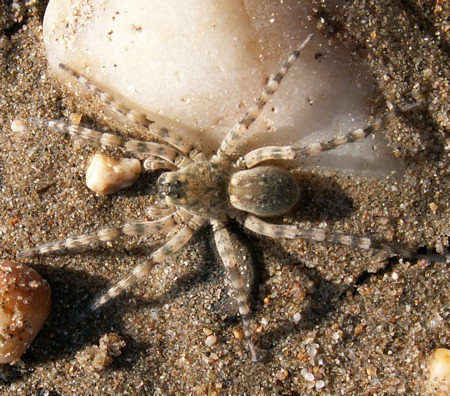
Lycosidae
Arctosa cinerea
Size : 12 -14 mm M, 14 - 17 mm F
Habitat: On sandy or stony riverbeds or lakesides.

Araneidae
Cyrtophora citricola
Prickly pear spider, tent-web spider, dome-web spider.
The spider belongs to the family Araneidae, the orb-web weaving spiders, but constructs a totally different web.
The spider makes a large irregular web with a dome/tent shape in the center under which she hangs with her egg-sacs
Size : 9 mm
Habitat: common spider found on all seven Canary islands.
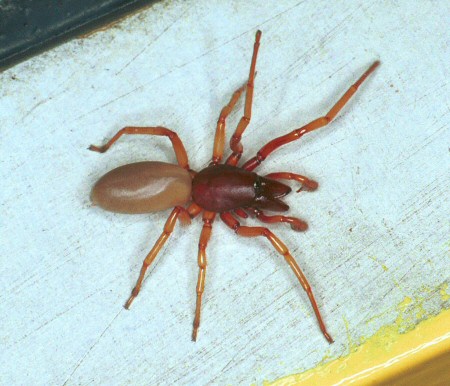
Dysderidae
Dysdera crocata Male
Size : 9 -13 mm
Dysdera crocata Female
The spider is nocturnal and has a bad reputation because she can give a bite with her long jaws. These two spider were very gently to me and very docile. They feed on woodlice using their long jaws to penetrate the armour.
Size : 11 -17 mm
Habitat: Under stones around building and old walls.
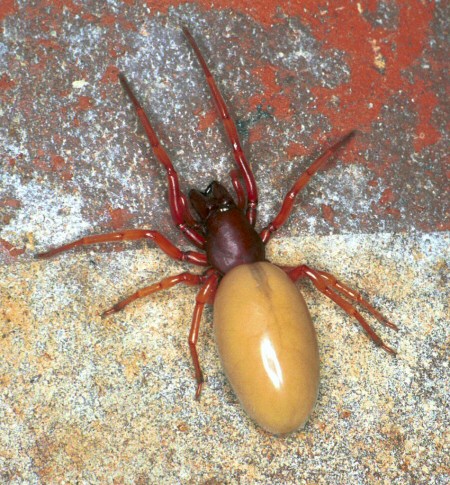

Eresus sandaliatus
Eresidae
Size : Male 12 mm, female 40 mm
One Eresus species appears on only La Gomera and is named; Eresus crassitibialis descibed by Wunderlich in 1987.
Shown are a look-alike male and female to have an impression how they look.
Habitat: Colonial species present only on La Gomera.

Eresus male and female around nest.

Dictynidae
Nigma puella top female, bottom male
formerly Heterodyctina puella
Size : 3 mm
The spider lives on leaves when she spins a web like on the picture.
Habitat: Gardens and humid areas.
<---- Male
Theridiidae
Latrodectus tredecimguttatus,
viuda negra, black widow
This genus that belongs to the large family Theriididae that contains thirty described Latrodectus species. They live in the tropical and sub-tropical regions. The spider spins a web in protected corners of fields, gardens, near stones and woodpiles and in vegetation. They are rarely found indoors.
Size : female 8-10 mm, male 2-4 mm
Habitat: Dry sandy areas.
<---- Female
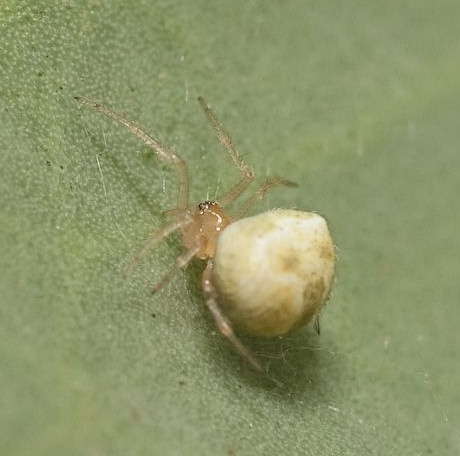
Theridiidae
Paidiscura orotavensis ( by GPT)
a few mm long
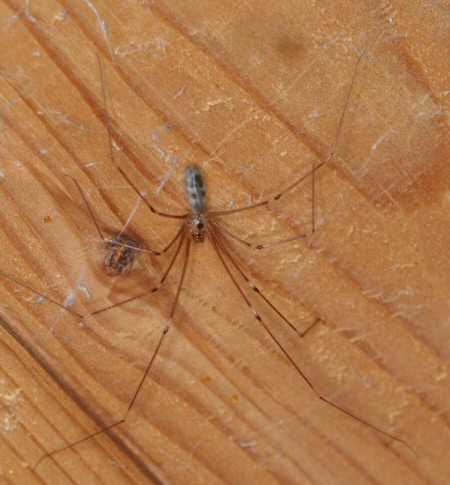
Pholcidae
Pholcus phalangioides, vibrating spider, "daddy long leg"
Size : up to 20 mm
Habitat: Lives in untidy webs in de corners of buildings.
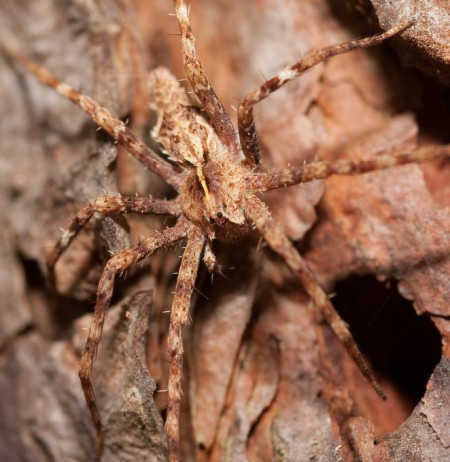
Pisauridae
Cladyens insignis ( by GPT)
Size : up to 15 mm
Habitat: Forests between grass and heather.
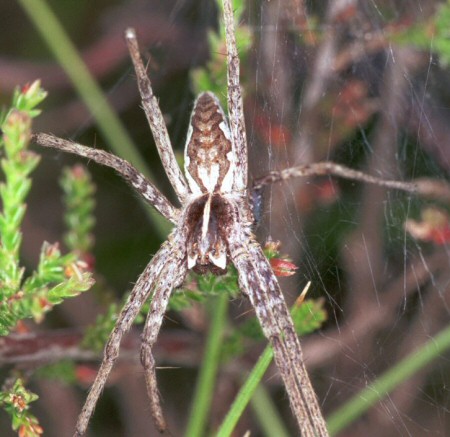
Pisauridae
Pisaura mirabilis
Size : up to 15 mm
Habitat: Forests between grass and heather.

Araneidae
Zygiella x-notata
Size : 6 mm
Habitat: mostly around houses preferable on window frames.

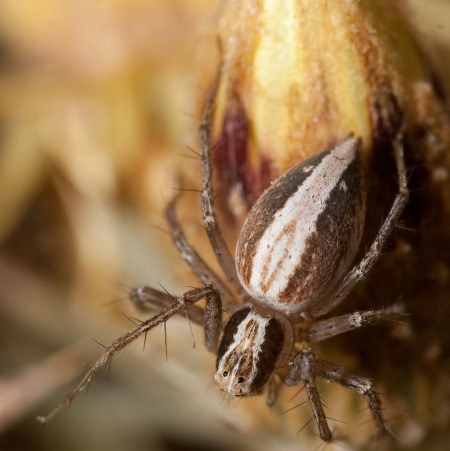
Oxipidae, Lynx spider
Oxyopes kraepelinorum ( by GPT)
Habitat: On low vegetation

Araneidae
Mangora acalypha
Size : 3 - 4 mm
Habitat: On low vegetation
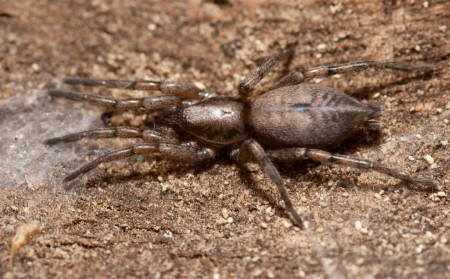
Gnaphosidae
Unknown species ( by GPT)
Habitat: Under stones and leaf-litter
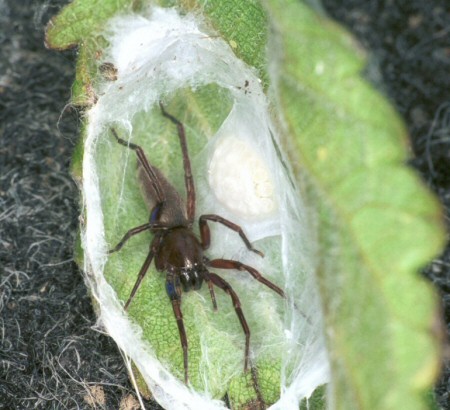
Gnaphosidae
Drassodes lapidosus
Size : 9 - 18 mm
Habitat: Under stones and leaf-litter

Thomisidae
Crab spider
Size: +/- 5 mm
Ozyptila tenerifensis ( by GPT)
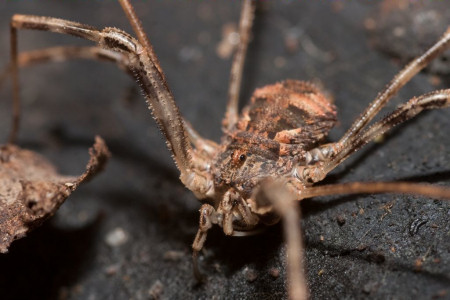
Opiliones
Harvest man
Bunochelis spinifera ( by GPT)
Harvestmen have an oval shaped body. The front and back of the body is grown together in contrast to spiders where the front and back end is separated by a stalk (pedicel).
They have two eyes in the middle of their head looking sideways. They are also known as "harvestmen". Most of the harvestmen have long legs, but not all.
Harvestman do not have booklungs but breath through trachea only.
They should not be confused with the " daddy longlegs " (Pholcidae).
